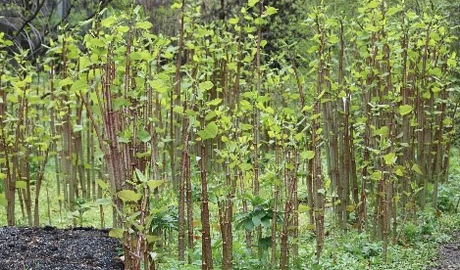
Japanese Knotweed is one of the world's most invasive plants. You can find Knotweed in your garden and often in public areas. It has been known to grow through foundations of buildings and take over landscapes. This can seriously impact the value of a property, as mortgage lenders will simply refuse if they know that Japanese Knotweed is present surrounding or on a property.
How close it is to me?
Japanese Knotweed is very widespread across the UK. The Environment Agency commissioned a new app to track Japanese Knotweed. Their data has pinpointed over 6,000 Knotweed locations. This kind of data can be very useful for people looking to buy property in certain areas so they know where to avoid.
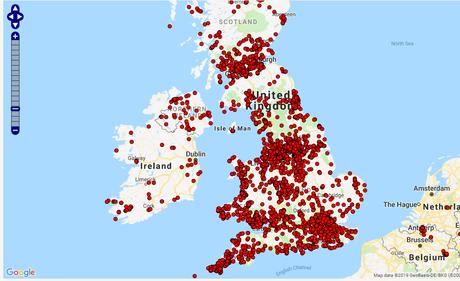
Click here to view full UK map and zoom in on your area to see the verified records of Japanese Knotweed near you.
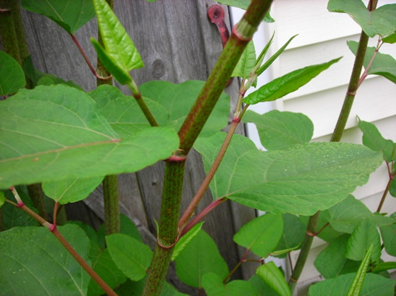
To get rid of Japanese Knotweed there are multiple approaches you can take, however this species of invasive plant may need multiple attacks to control it.
- Killing it with an herbicide
- Smothering it with tarps
- Digging out the rhizomes
- Cutting to the ground
- Professional removal services
Can I get rid of Japanese Knotweed myself?
Treating Japanese Knotweed yourself is possible but can be difficult and time consuming. Japanese Knotweed grows up to 10cm a day, so it is essential that you are quick and effective with removal. To remove Japanese Knotweed yourself, follow the tips below.
How do I permanently get rid of Japanese Knotweed?
No infestation of Japanese Knotweed is the same. To permanently kill Japanese Knotweed, you must:
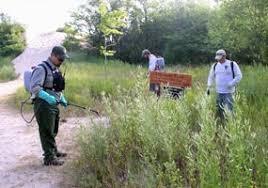
- Identify Japanese Knotweed as soon as possible to prevent further growth and damage.
- Cut down and remove the canes. Cut off the canes as close to the ground as possible, then remove the cut pieces from your lawn or garden.
- Apply Glyphosate based Weed killer. Spray the weed killer onto the plants immediately after cutting down the canes. Make sure you only spray the Japanese Knotweed as the weed killer will destroy and vegetation it comes into contact with.
- Wait at least 7 days before pulling the weeds. This gives the herbicide time to target the root of the Knotweed. After 7 days, pull out and remove all the dead Knotweed, making sure to pull out all the root.
- Mow the plants weekly. To remove re growing or remaining weeds, cut down the plant as short as possible weekly as this may weaken and kill the plant.
- Reapply Glyphosate. Unfortunately, using glyphosate once won't completely kill the Japanese Knotweed. Professionals recommend that you apply weed killer twice per year, preferably around the time that Knotweed thrives the most.
- Contact a professional. Japanese Knotweed is extremely difficult to permanently eradicate, so if your DIY attempts fail, contact a professional and have them remove it for you.
How do you burn Japanese Knotweed?
Once Japanese Knotweed is removed, the waste bust be disposed of quickly and efficiently to prevent further spreading. There are a number of ways to dispose of Japanese Knotweed such as:
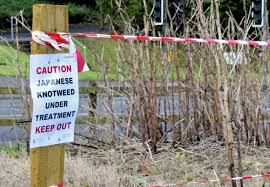
- Bury the plant and install a root barrier (according to guidelines)
- Have professionals remove it for you
- Have the waste treated by specialists so it can be taken to licensed landfill
Although all of the above methods are popular, they all come with the increased risk of Japanese Knotweed returning should any seeds escape en route, if you are to transport the waste yourself.
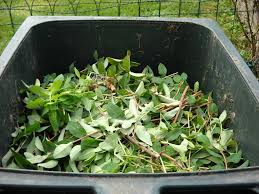
Invasive plant waste is classified as controlled waste as the risk of spreading is so severe. Incineration is the most beneficial method of disposing of invasive plant species as it would ensure no surviving roots remain in the ground following burning. The legal implication of not properly controlling the disposal of Japanese Knotweed can be severe.
If an individual is unable to control the spread of this invasive weed into the wild, they could receive a fine of up to £5,000, and a custodial sentence. This includes allowing the spreading of Japanese Knotweed onto neighbouring properties. Therefore, having complete control of the full process would be beneficial to ensure the risk of spreading is eradicated.
Other common forms of invasive plants are:

